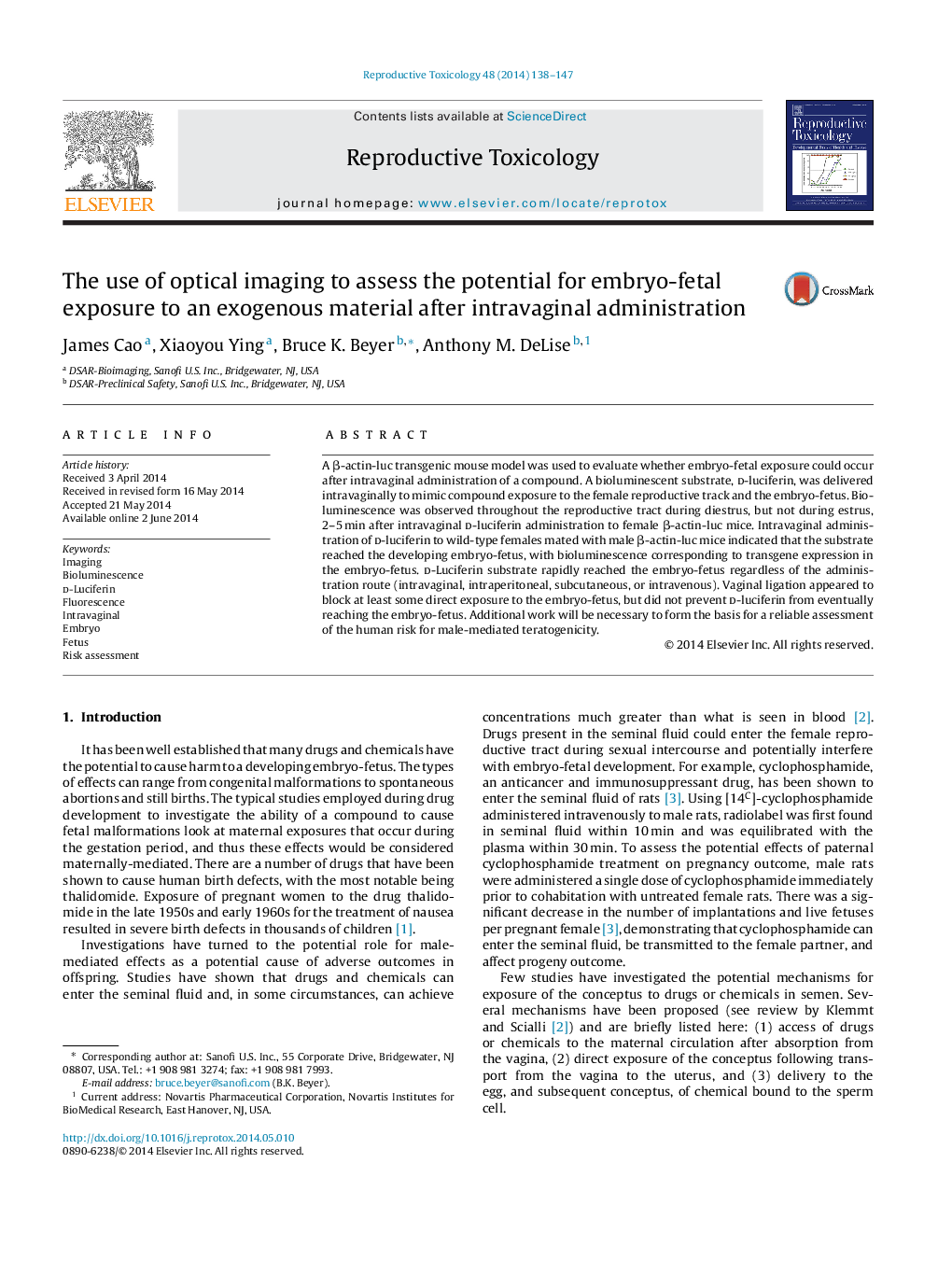| Article ID | Journal | Published Year | Pages | File Type |
|---|---|---|---|---|
| 5858601 | Reproductive Toxicology | 2014 | 10 Pages |
â¢Optical imaging was used to assess embryo-fetal exposure to imaging substrates.â¢Intravaginally dosed substrates rapidly appeared in the female reproductive tract.â¢Intravaginally dosed substrates rapidly reached the embryo-fetus.â¢Local and systemic exposures contributed to the imaging signal.
A β-actin-luc transgenic mouse model was used to evaluate whether embryo-fetal exposure could occur after intravaginal administration of a compound. A bioluminescent substrate, d-luciferin, was delivered intravaginally to mimic compound exposure to the female reproductive track and the embryo-fetus. Bioluminescence was observed throughout the reproductive tract during diestrus, but not during estrus, 2-5 min after intravaginal d-luciferin administration to female β-actin-luc mice. Intravaginal administration of d-luciferin to wild-type females mated with male β-actin-luc mice indicated that the substrate reached the developing embryo-fetus, with bioluminescence corresponding to transgene expression in the embryo-fetus. d-Luciferin substrate rapidly reached the embryo-fetus regardless of the administration route (intravaginal, intraperitoneal, subcutaneous, or intravenous). Vaginal ligation appeared to block at least some direct exposure to the embryo-fetus, but did not prevent d-luciferin from eventually reaching the embryo-fetus. Additional work will be necessary to form the basis for a reliable assessment of the human risk for male-mediated teratogenicity.
